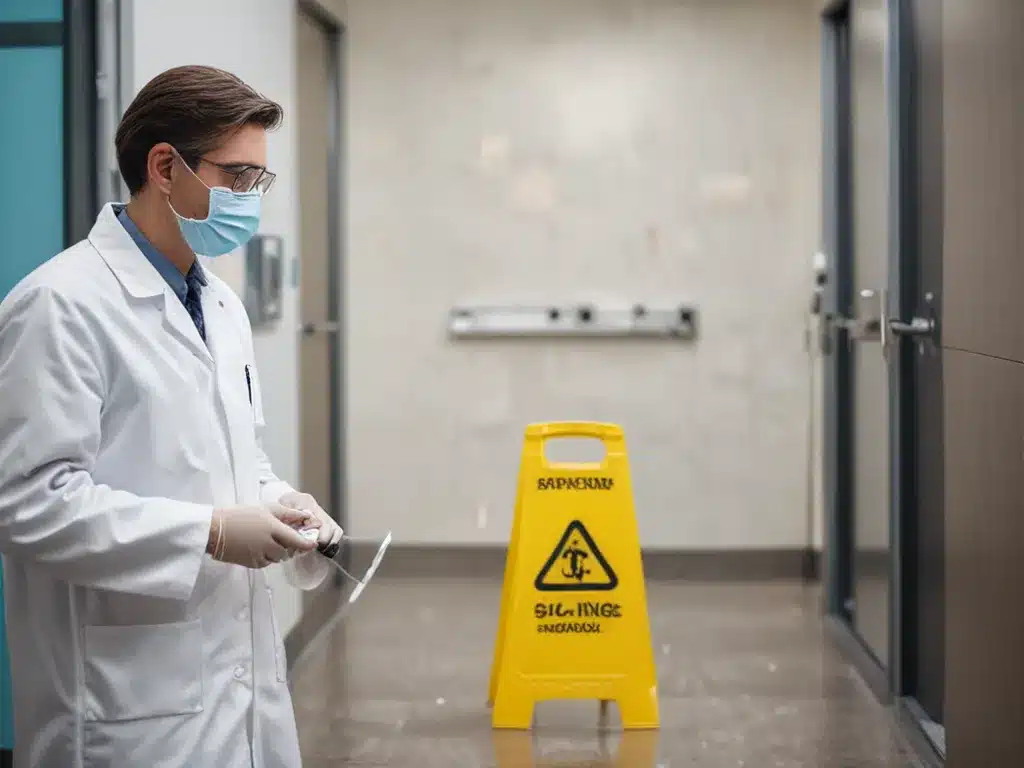Introduction
As a professional cleaner, I know that sanitization is a crucial part of my job. Proper sanitization helps ensure the health and safety of my clients by eliminating bacteria, viruses, and other pathogens from surfaces and spaces. In this article, I will provide an in-depth look at the science behind professional sanitization.
The Goals of Sanitization
When I sanitize a space as a professional cleaner, I aim to accomplish three key goals:
Eliminate Pathogens
Sanitizers work to eliminate or reduce pathogens like bacteria, viruses, and fungi to safe levels. By using sanitizers properly, I can help interrupt the transmission route of illnesses and infections.
Remove Organic Contaminants
Sanitizers also work to break down and remove organic contaminants like dirt, grease, and grime. Getting rid of these contaminants helps maintain cleanliness and reduces places where pathogens can grow.
Prevent Cross-Contamination
Through proper sanitization, I also aim to prevent cross-contamination, which is when pathogens are unintentionally transferred from one surface or object to another. Stopping cross-contamination is crucial for maintaining safe and hygienic environments.
How Sanitizers Work
There are three main ways that sanitizers work to achieve the goals of sanitization:
Destroying Cell Walls
Some sanitizers like __bleach and alcohol __contain chemicals that destroy the cell walls of pathogens. By rupturing cell walls, the pathogens can no longer function or reproduce.
Denaturing Proteins
Sanitizers like quaternary ammonium compounds (QUATs) work by denaturing proteins in pathogens. This disrupts key protein functions, essentially deactivating the pathogen.
Preventing Reproduction
Other sanitizers work by interfering with the reproductive capabilities of pathogens. This stops the pathogens from spreading and growing in number.
Key Factors in Proper Sanitization
To leverage the science behind sanitizers properly, I focus on four key factors whenever I sanitize professionally:
1. Using the Right Products
-
Match sanitizer to target pathogens: Different sanitizers work better on different pathogens. For example, bleach disinfects against norovirus while QUATs are better against gram-positive bacteria.
-
Check product registration: I confirm sanitizing products are EPA-registered, meaning they are proven to be effective sanitizers.
2. Following Proper Procedures
-
Read labels and follow instructions: Sanitizer products include specific dilution rates and contact times I must follow.
-
Allow required wet contact time: I keep treated surfaces wet for the time specified on the label to allow full sanitization.
-
Replenish solutions: I maintain proper sanitizer concentration in solutions during my shift.
3. Practicing Proper Technique
-
Thorough application: I apply sanitizer thoroughly across all target surfaces and objects.
-
Avoid cross-contamination: I use clean cloths to apply sanitizers and avoid spreading pathogens.
-
Let surfaces air dry: I don’t wipe sanitizers off before they air dry to allow full sanitization.
4. Maintaining Safety
-
Use PPE: I wear protective equipment like gloves and avoid direct contact with concentrated sanitizers.
-
Ensure ventilation: I sanitize in well-ventilated areas to reduce inhalation risks.
-
Follow first aid: I follow first aid instructions if accidental exposure occurs.
Common Sanitizers Used
As a professional cleaner, the main sanitizer products I leverage include:
Bleach
-
Active ingredient: Sodium hypochlorite
-
Mode of action: Destroys cell walls and denatures proteins
-
Key uses: Disinfecting against norovirus and coronavirus on hard, non-porous surfaces
Alcohol
-
Active ingredient: Ethanol or isopropyl alcohol
-
Mode of action: Destroys cell walls
-
Key uses: Fast-acting surface disinfection of equipment and tools
QUATs
-
Active ingredient: Quaternary ammonium compounds
-
Mode of action: Denatures proteins
-
Key uses: Disinfecting soft surfaces like carpets against gram-positive bacteria
Hydrogen Peroxide
-
Active ingredient: Hydrogen peroxide
-
Mode of action: Denatures proteins and neutralizes pathogens
-
Key uses: No-rinse sanitization of food contact surfaces
Proper Handling and Storage
To maintain efficacy and safety, I also adhere to best practices for handling and storing sanitizers:
- Store in cool, dry areas away from direct sunlight
- Ensure containers are properly labeled
- Never mix sanitizer products together
- Rotate stock to use older products first
- Dispose of expired sanitizers properly
Following these protocols prevents degradation and chemical interactions.
Conclusion
The key takeaways around the science behind professional sanitization include:
- Sanitizers work through cell wall destruction, protein denaturing, and halting reproduction
- Matching sanitizers to target pathogens is crucial for efficacy
- Following product labels and allowing full contact time is essential
- Practicing safe techniques maintains safety for myself and clients
- Proper handling and storage maintains sanitizer integrity
By leveraging the science appropriately, I can help provide the highest levels of cleanliness and health safety as a professional cleaner. Proper sanitization requires expertise in product selection, procedures, techniques, and more. My in-depth sanitization knowledge gives clients confidence in my cleaning services.







